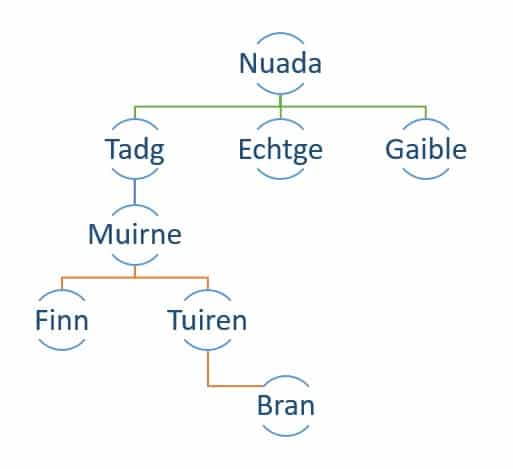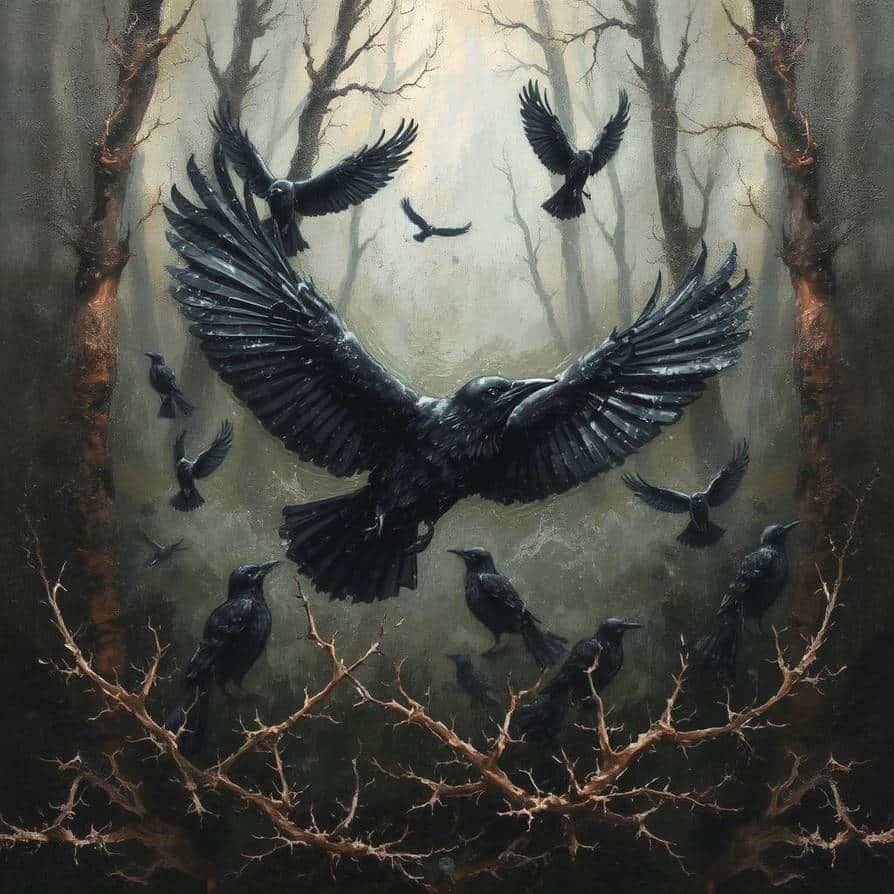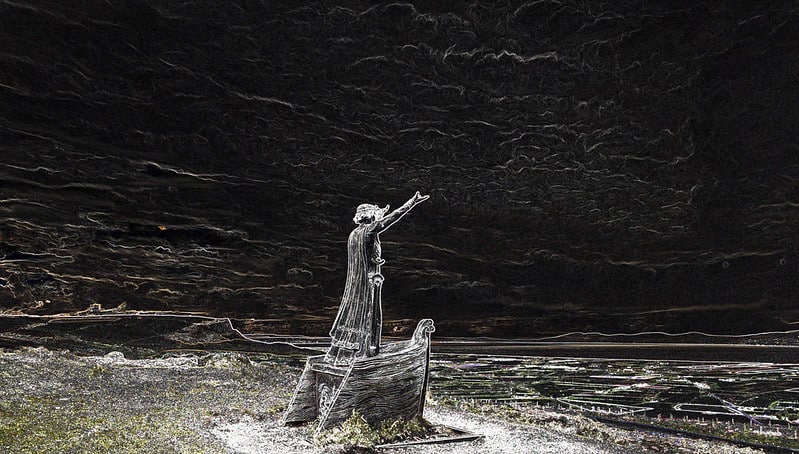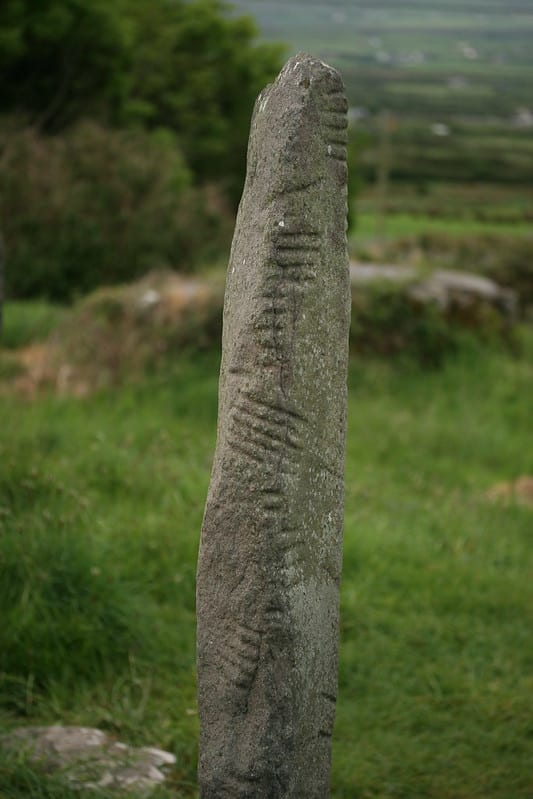If I were to list out the Egyptian, Greek, Roman, and Norse cultures, I can almost guarantee that their respective pantheons will come to mind. But if I now add the Irish to this list, I wonder how many would be able to list even one of their gods. Even as someone who grew up in Ireland, I find it incredible how I could have learned about each of these other religions, but never once touched that which surrounded me. And yet, the Irish pantheon is just as impressive, perhaps more so, than these ancient counterparts, and certainly worth our attention.
Unlike these other ancient religions, the Irish gods cannot be reduced as easily to a single family or mythological tradition. With over 400 gods mentioned in historical records, it’s difficult to overstate the complexity of these deities. Local particularities and traditions deeply shaped and dictated what gods were worshipped – or as one scholar puts it: “localized nature deities and shadowy figures of over-arching significance”1. And while there were certain prominent gods, often there were more than one for each given aspect of worship (such as healing). I am far from qualified to explain these distinctions, but I think it’s worth noting them here to at least give context for the Irish gods described below.
Deities of Ireland
You might be surprised, as you read on, to recognize many of the names and beliefs which have shaped modern culture even today. Some have close counterparts in other ancient religions (e.g. Manannan and Hades) or were influenced by the religions of Romans and other Celtic religions. But the Irish religious tradition is unique in many important aspects, with a rich mythological canon.
Below are the gods I have discovered to be of greatest significance throughout the myths and historical evidence I have read. Often the names and beliefs associated with them vary as much as the gods themselves, so I’ve tried to capture what is the prevalent background on each. But for those who want to truly investigate further, please see the list of sources at the bottom of the article.

©Daniel Kirkpatrick
1. Nuada
Father of the Irish gods and worshipped as a sun-deity.2 He was King of the Tuatha de Danaan when they invaded Ireland and defeated the native inhabitants, the Firbolgs. In the battle, Nuada lost his arm and was dethroned by another of the gods, Bres, due to the shame of his maiming. But later the healer god, Diancecht, made a new arm of silver resulting in his new name, Nuada the ‘Silver Hand’.3
Nuada was later restored to king and ruled until he was killed in the Great Battle of Magh Tuireadh by the invading Fomor. As shown in the family tree here, many of the great Irish hero’s trace the descent to Nuada. This shows the prominence of Nuada as one of the most significant of the Irish gods.
2. Dana
Mother of the gods as the term Tuatha De Danann suggests – it means ‘the tribes of the goddess Dana’. She was also known as Ana or Danann. She was worshipped as the goddess of plenty and fertility.
Two mountains near Killarney are still known as ‘the Paps’ a reference to the Two Paps of Danann which commemorated her divinity.
Some believe Dana was later worshipped as Brigit rather than her being a separate god.4 Though I personally find this unconvincing given the various differences between them.
3. Morrigan (or Morrigu)

© Allan Santos
One of the most famous of the ancient Irish gods, Morrigan is typically depicted as the crow of battle or as “a loathsome-looking hag”.5 She appears in most ancient Irish battles, vengeful and as a harbinger of chaos. Having assumed her animistic form, she has the ability to confound armies.
She is sometimes called Badb, the warrior goddess, though the two names typically refer to different gods depending on the source.6 Regardless, she is known to have delighted in the slaughter of battle and would have been seen flying over battle in the form of a crow or carrion bird.
In the battle against the Firbolgs, Morrigan, along with Badb and Macha, brought on “mists and clouds of darkness”.7 In the Ulster Cycle myths she is often “meddling in Ireland…stirring up wars and quarrels”.8
4. Lugh
Lugh succeeded Nuada as King of the Men of Dea. It was through his leadership and cunning that the Men of Dea overcame the Fomor at the Battle of Magh Tuireadh. Following this success, Lugh was made King. He later relinquished his kingship in place of Dagda after many successful years of rule.
Unlike many of the other gods, Lugh’s skills weren’t restricted to a single domain, such as healing, but covered a wide range. Lugh was skilled in art, music, all forms of crafts, battle, leadership, and healing. Lugh was also known as Lugh of the long arm because of his prowess with a sling and throwing spear.
Lugh was also notably the father to the famed warrior Cu Chulainn and step-brother to renowned Finn mac Cumhal.
5. Manannan mac Lir

© Conall
“Son of the sea”, he was the Irish sea-god and is the namesake for the Isle of Man today. In ancient myths he is usually depicted riding on his sea-chariot and surrounded by mist. He had three-legs on which he rolled along land, wheel-like.
His horse, the Aonbharr, was “as swift as the naked cold wind of spring, and the sea was the same as dry land to her, and the rider was never killed off her back”. Manannan’s breastplate would protect whoever wore it from wounds, and his helmet was set with precious stones. His sword, the Freagarthach, the Answerer, would be fatal to anyone wounded by it.9
6. Dagda
Dagda was a powerful and benevolent god (known as the ‘good god’). He fathered many of the other gods listed here. Along with Nuada, he is considered a sun-god and one of the most powerful of the deities. His wife was the river goddess Boann (which the river Boyne takes it name from) and he is believed to have resided in the ancient tomb Brug na Bóinne (Newgrange).10

© Daniel Kirkpatrick
Dagda succeeded Lugh as the King of the Tuatha de Danann. Later Dagda was thought to have become ‘King of the Fairies’, retreating into the hills and mounds after his defeat by the Milesians, forming an invisible world of their own.11 For centuries after, these fairy-hills were widely feared and held with great superstition throughout Ireland as the homes of fairy-folk.
He is also said “to have been master of druidery and a warrior leader, as well as a man capable of building some of the major fortresses in Ireland”.12
7. Brigit
Woman of poetry, worshipped by poets and a woman of healing and smithing “it was she [who] first made the whistle for calling one to another through the night”. One side of her face was ugly, the other beautiful.
The meaning of her name was Breo-saighit, a fiery arrow. She was also the daughter of Dagda.

© Pam Corey
8. Ogma (or Ogmé)
Brother of king Nuada, and son of Elada, who taught his people writing. He founded oghamic writing, the ancient usage of strokes to symbolise the Gaelic language13. He was also called ‘sun-faced’.14
9. Diancecht
Another of Dagda’s many children, Diancecht was the healer or physician of the Tuatha de Danann. He made Nuada a replacement silver arm after he’d had the limb severed in the battle against the Firbolg.
His son, Miach, was a better healer than he. But Diancecht, filled with jealousy tried to kill him four times, each time his son healing the wound. Only on the fourth attempt was the wound fatal and beyond any healing skill.
He used herbs and spells to turn a well into a healing well, healing all the warriors who bathed in its waters during the Battle of Magh Tuireadh.
10. Macha
Goddess of war and fertility. She was believed to have feasted on the bodies of the dead after a battle. She wielded powerful magic, like Morrigan, Neman and Badb, as was described as one of the furies of battle.
As goddess of fertility, she is the namesake of Emain Macha. The brutal narrative of Macha’s twins describes the intersection between fertility and battle. Here she inflicts birth pains upon the warriors of Ulaid in punishment for their callous treatment of her in her pregnancy.
11. Goibniu
The smith and brewer of the gods. He had a special feast which conferred immortality to the gods and “consisted principally of beer” of which Goibniu was the brewer.15 He was responsible for arming his peoples with weapons and armour far superior than all others. Such was his skill that their enemies, the Fomor, sent one of their warriors to assassinate him, unsuccessfully.
Beyond these gods, there were many others which would take too long to name, never mind summarise. For those who want to explore further, I’d strongly recommend Lady Gregory’s masterwork on Irish mythology or any of the other sources noted below.
- Downham, Clare. “A Review of Ireland’s Immortals: A History of the Gods of Irish Myth.” International Yeats Studies 2, no. 1 (2017): 76. ↩︎
- Bonwick, J., 1894. Irish Druids and old Irish religions. S. Low, Marston., p134. ↩︎
- Gregory, Lady. Gods And Fighting Men The Story Of The Tuatha De Danaan And Of The Fianna Of Ireland Arranged And Put Into English. BoD–Books on Demand, 2024., p37. ↩︎
- Bonwick, p141. ↩︎
- P.W. Joyce, A Smaller Social History of Ancient Ireland, Dodo Press, p81. ↩︎
- Bonwick regards them as sisters. ↩︎
- Gregory, p30. ↩︎
- Gregory, p109. ↩︎
- Gregory, p44. ↩︎
- Though Newgrange’s mythological traditions are by no means restricted to Dagda as noted by Swift, 2003. ↩︎
- Bonwick, p104. ↩︎
- Swift, C., 2003. The gods of Newgrange in Irish literature & Romano-Celtic tradition., p56. ↩︎
- For more on its history see: https://www.historytoday.com/story-ogham ↩︎
- Bonwick, p145. ↩︎
- Bonwick, p144-45. ↩︎

Leave a Reply
You must be logged in to post a comment.